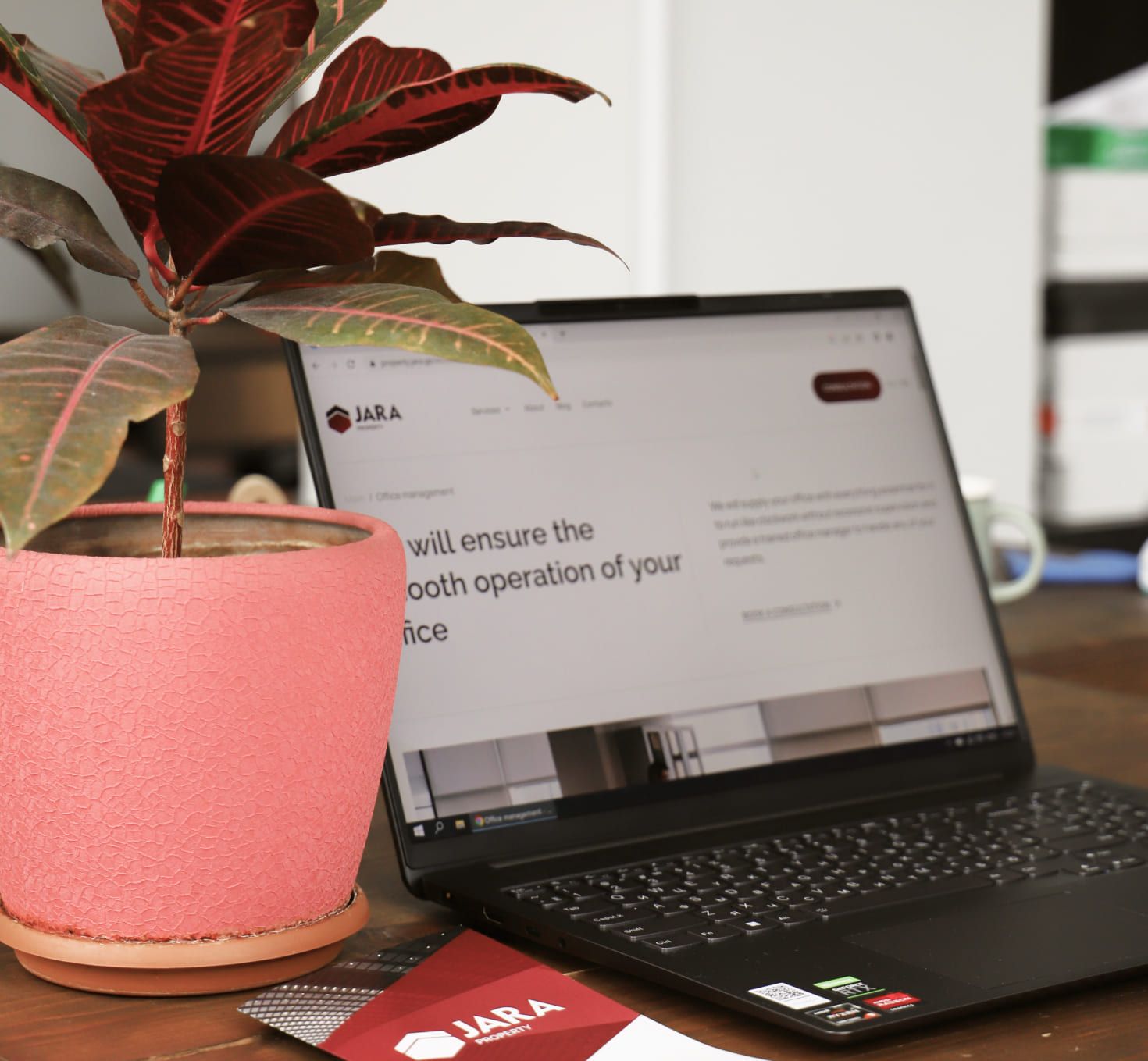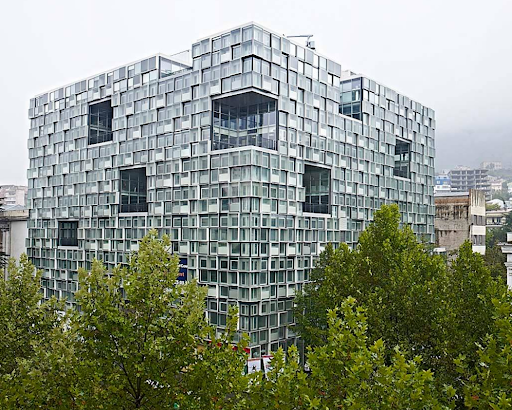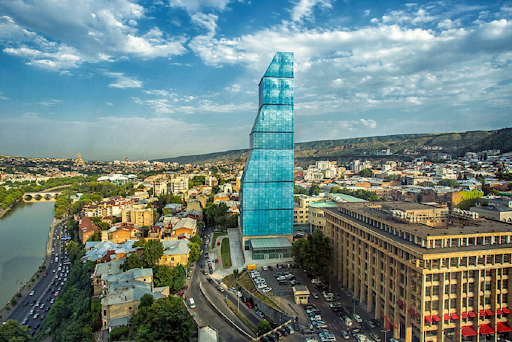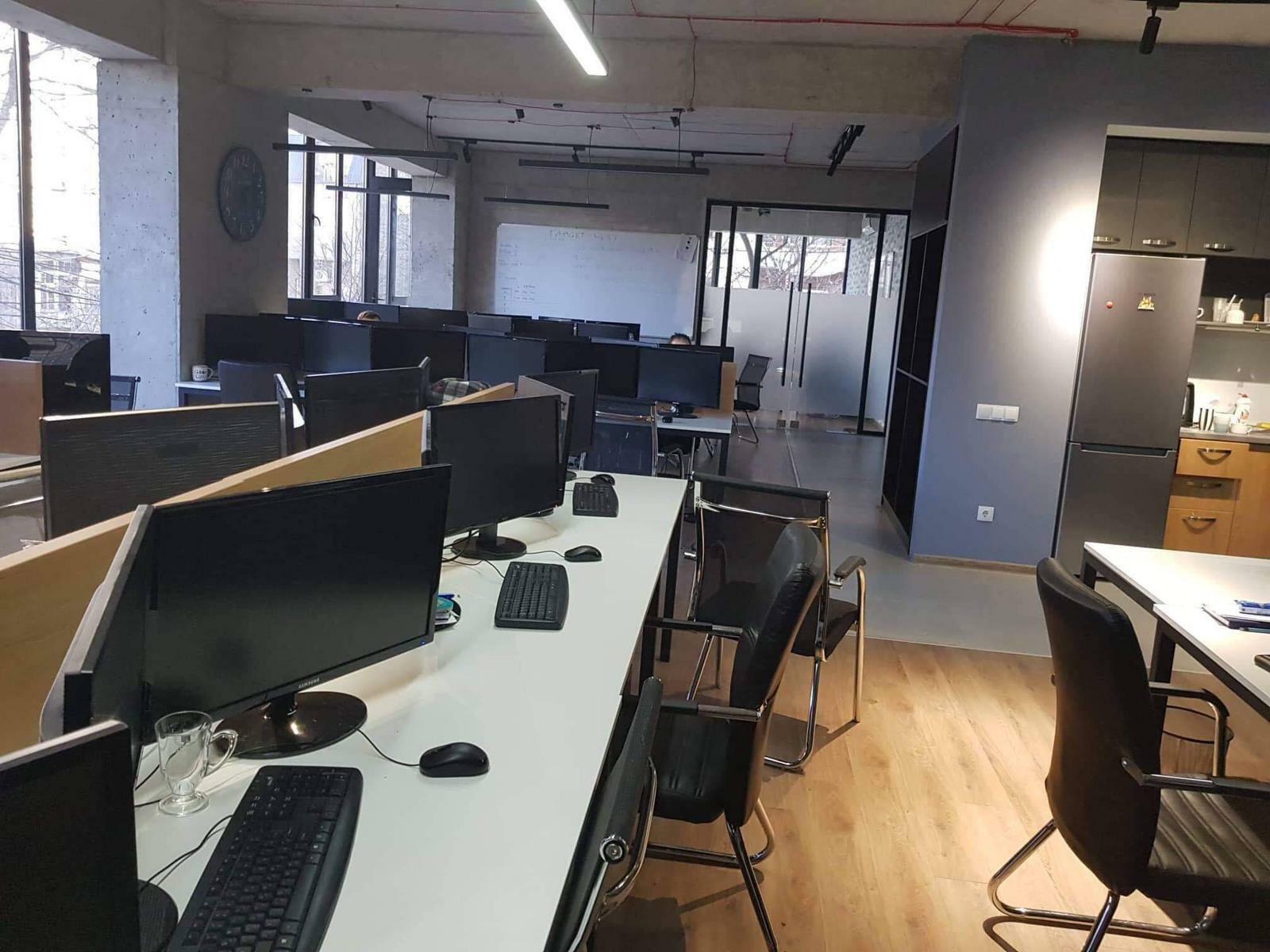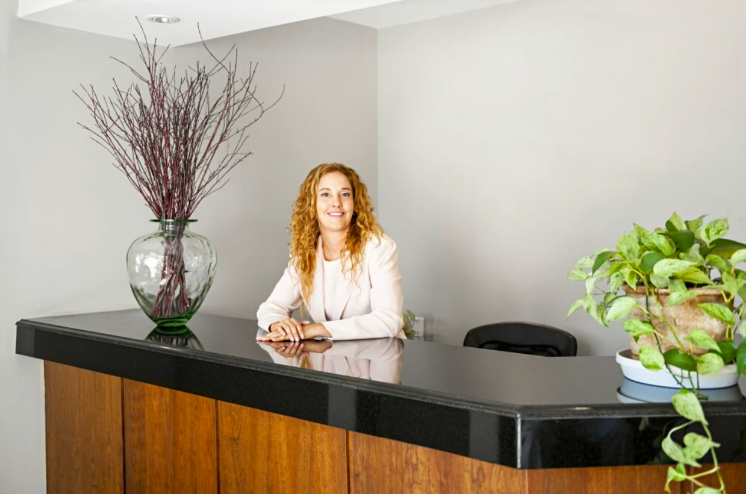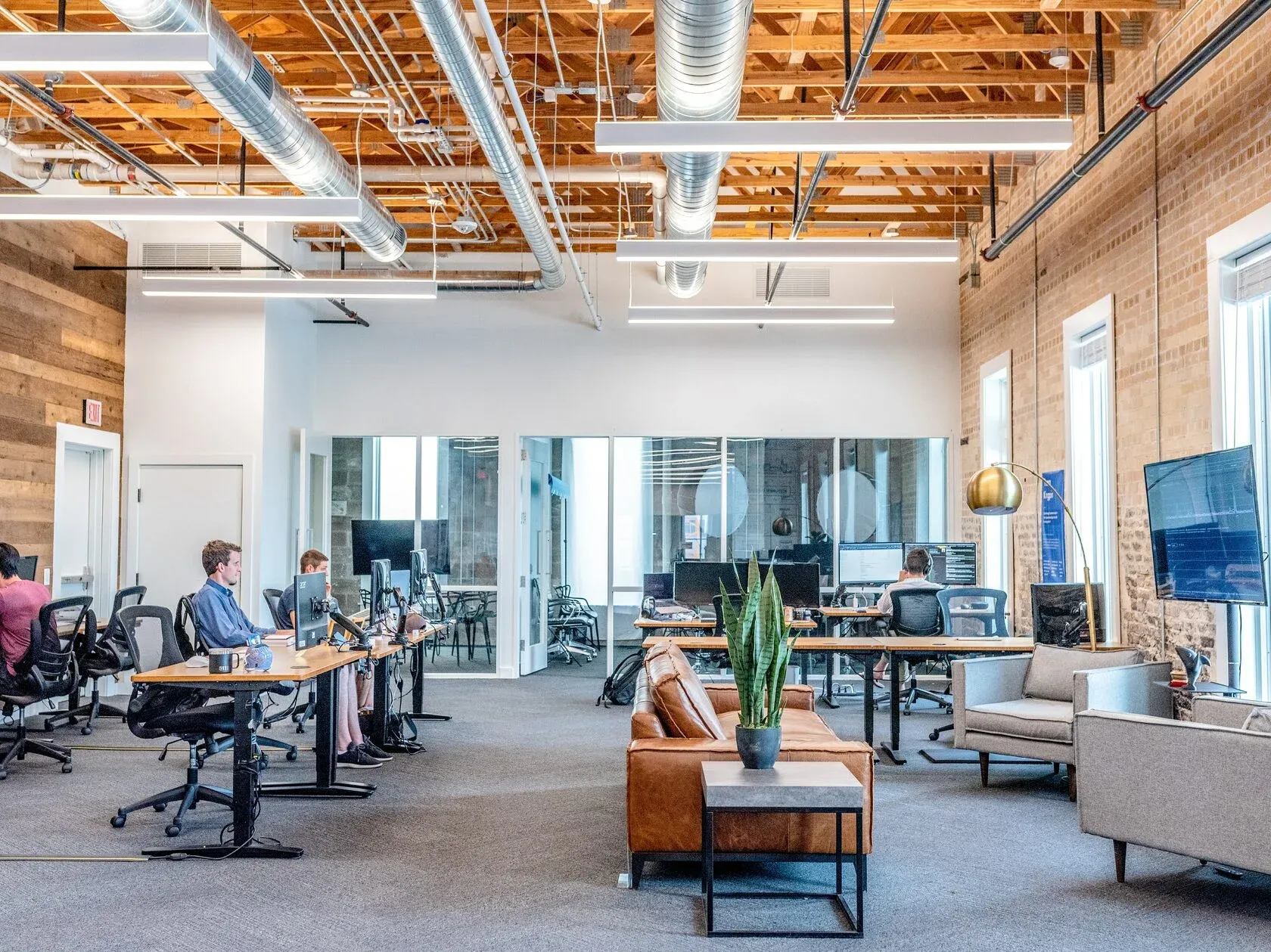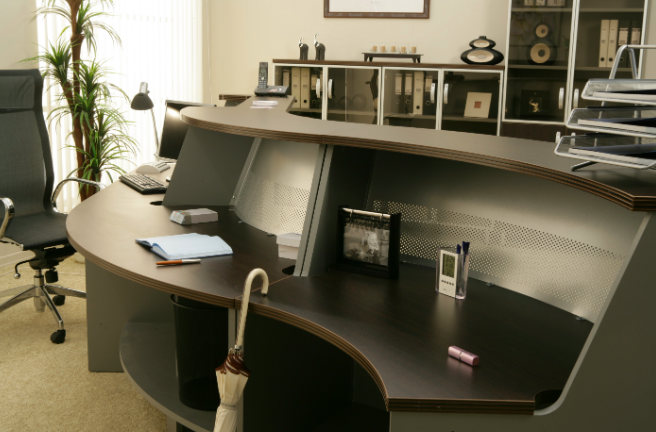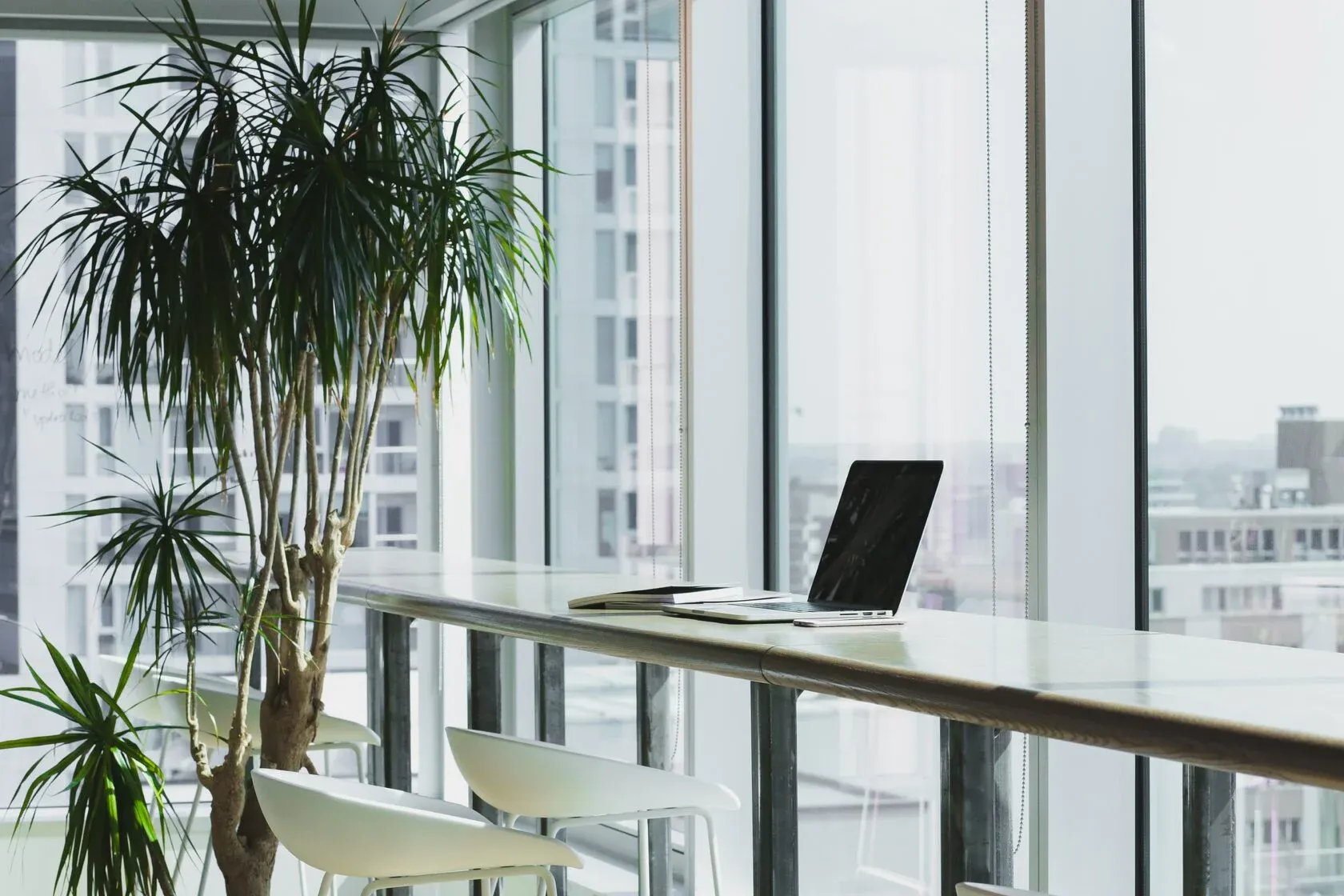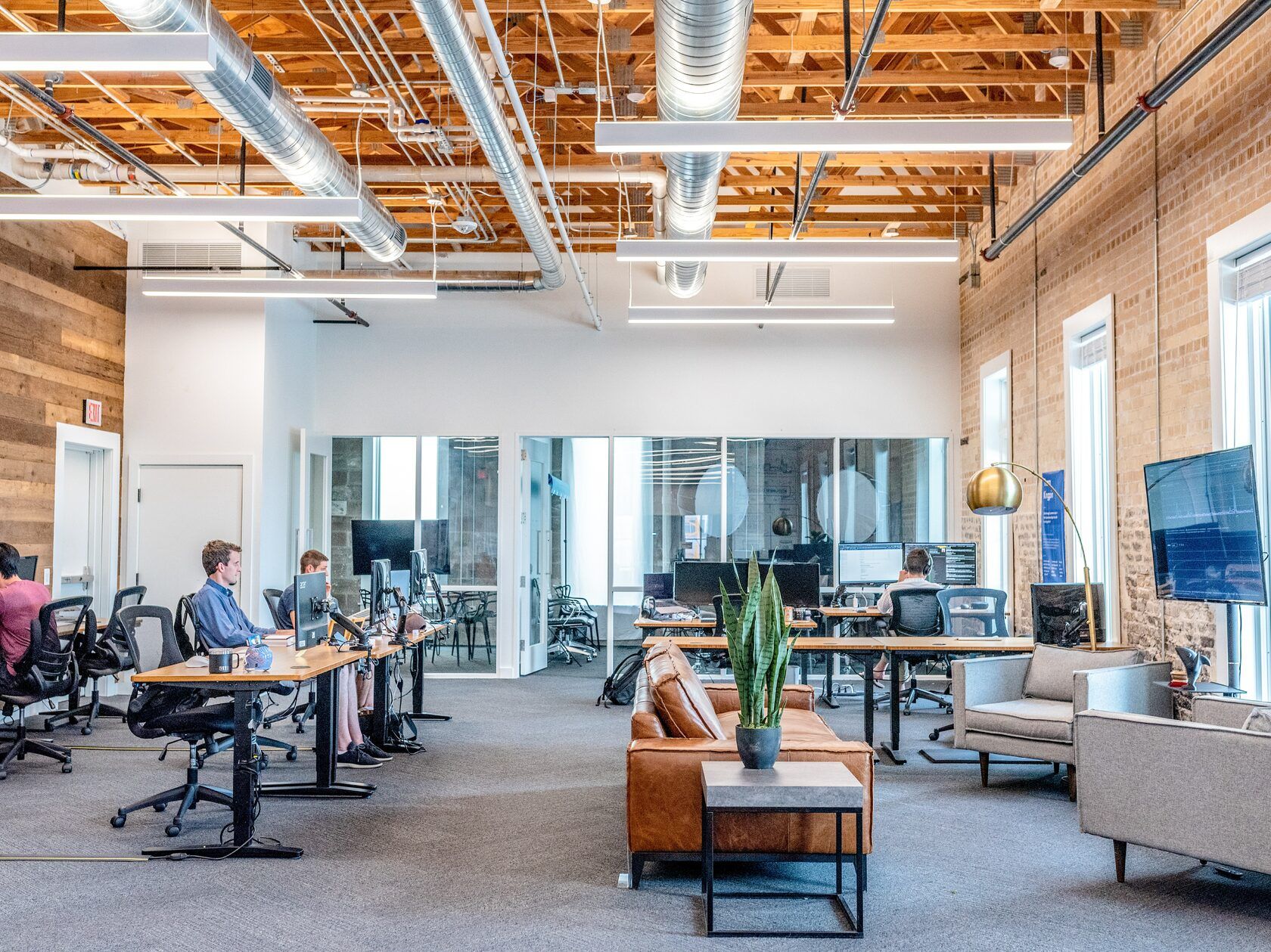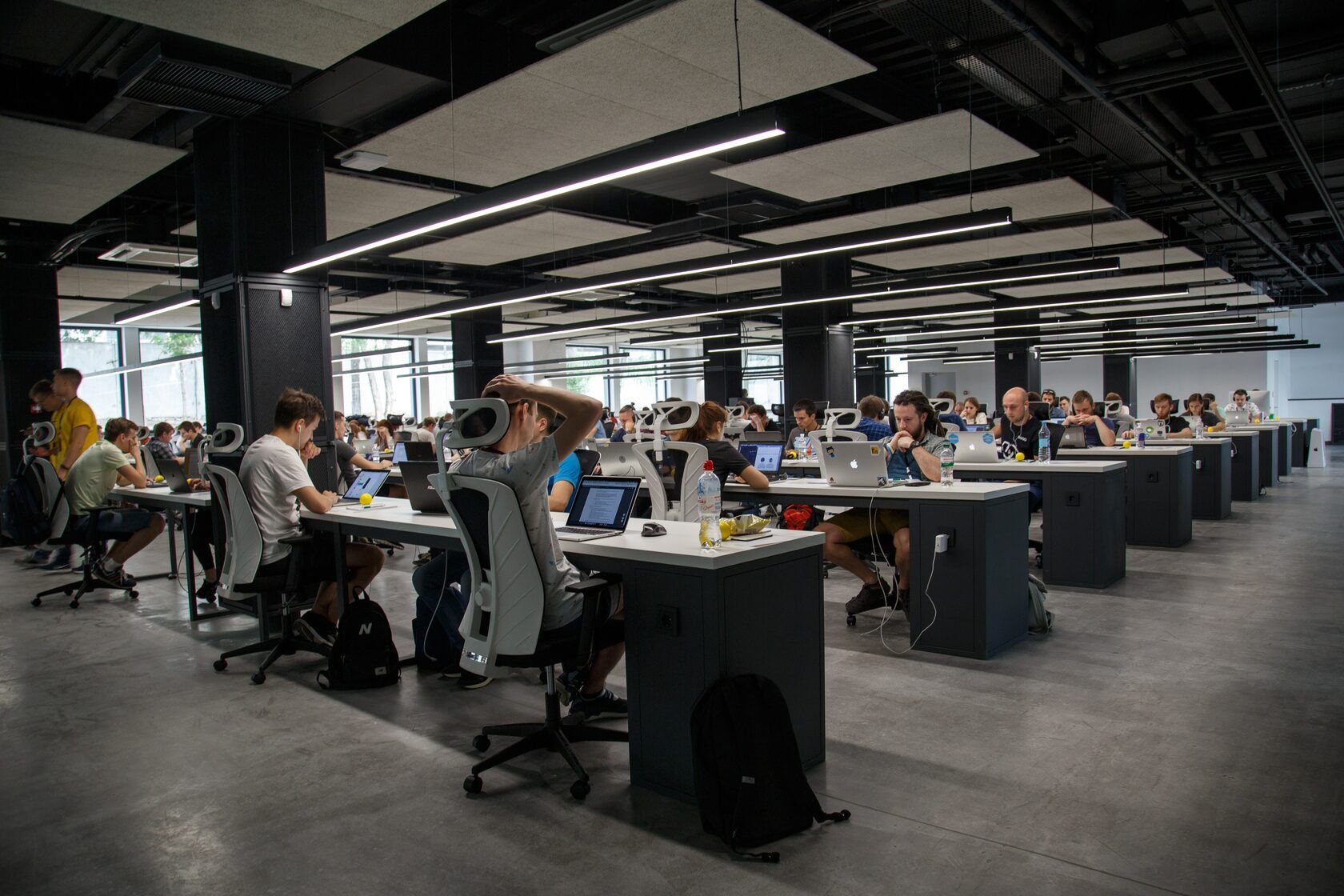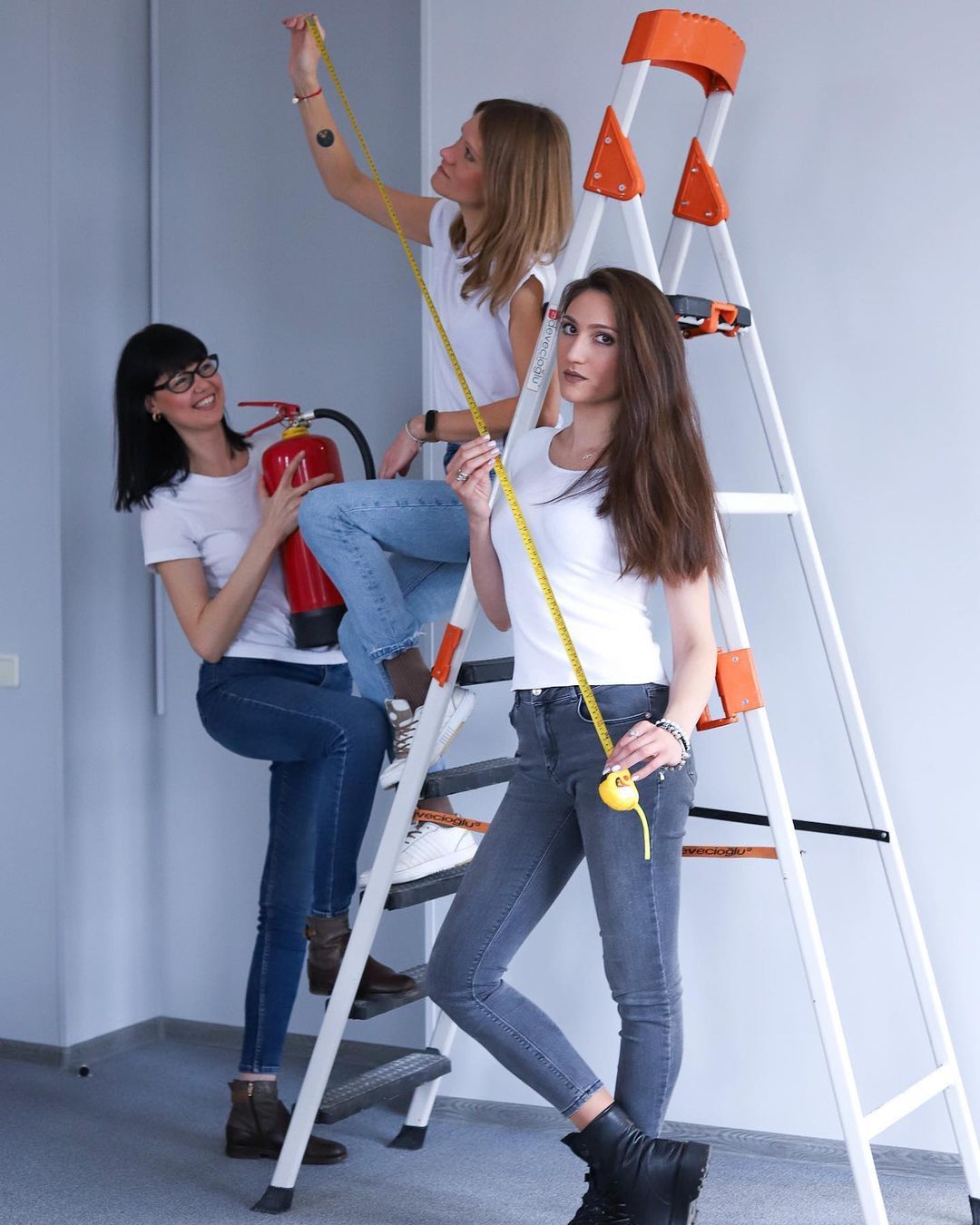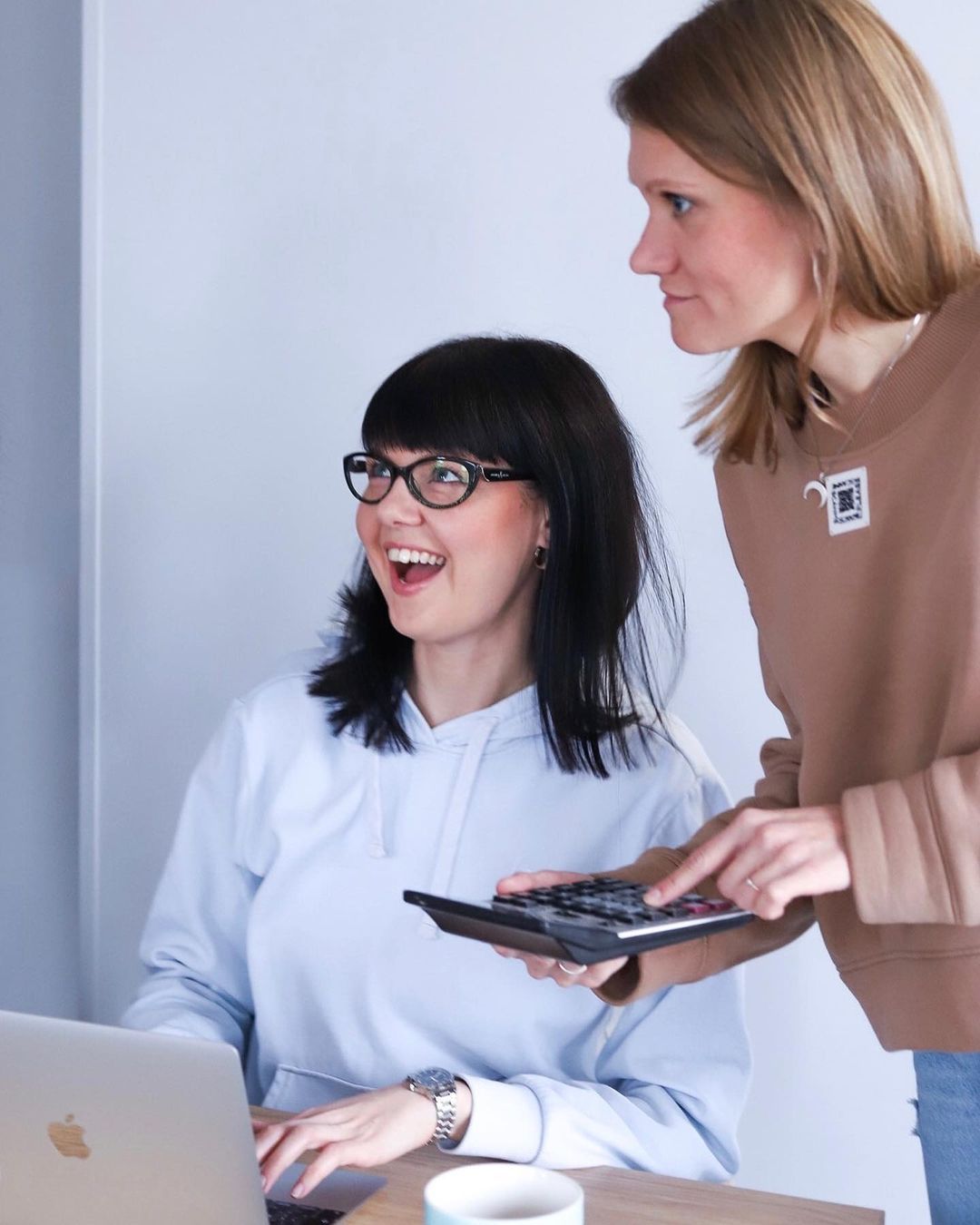Setting up office spaces with appropriate furniture typically takes place during the startup or renovation phase of a business, often demanding additional investments. Jara Property offers practical tips on how to efficiently and effortlessly create a cozy office environment.
The primary purpose of an office design project is to ensure an ergonomic and functional workspace. Most commonly, one might commission such a design project to:
- Craft an interior conducive to both productive work and relaxation for employees;
- Modify the space to accommodate an expanding team or an increase in equipment;
- Devise a striking design that will inspire employees and impress clients.
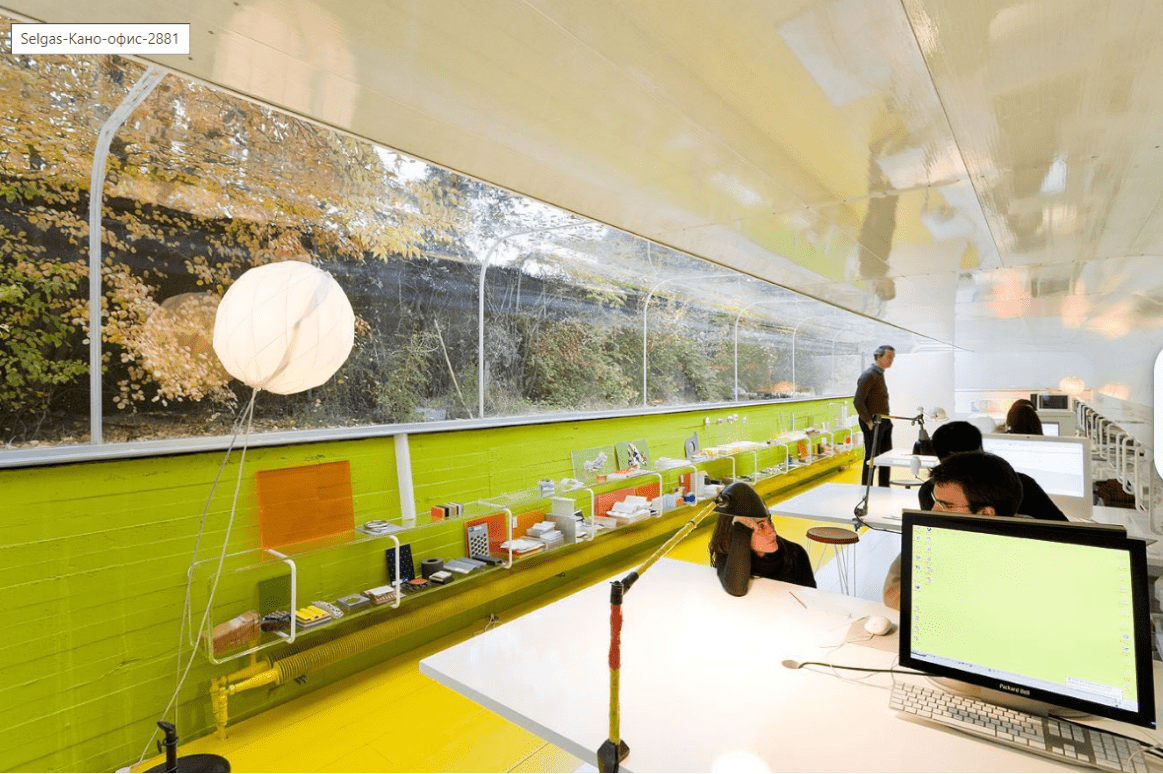 Selgas Cano office in Madrid, Spain
Selgas Cano office in Madrid, SpainA basic office design project includes planning for electrical installations and furniture placement. Such a plan can prevent many pitfalls, ensuring both convenience and safety for all.
A comprehensive design project, on the other hand, offers a 3D visualization of the future interior, illustrating finishes, color schemes, textiles, furniture, lighting options, and office greenery.
Having a well-crafted design plan in hand makes it possible to order all necessary pieces of furniture from a single supplier. Without such foresight, there's a risk of overlooking essential items during the initial purchase. This could lead to hurriedly buying missing pieces later, often at inflated prices.
Moreover, a thought-out plan allows for furniture purchases in stages, gradually furnishing each zone of the office space – a strategy particularly relevant when working with a limited budget.
When it comes to picking out furniture, there are three primary attributes to consider:
- Durability
- Comfort
- Functionality
1. Durability
This characteristic heavily depends on the proper selection of material, model, and supplier. Even if you're on a tight budget for your office setup, it's risky to make choices based solely on price. There's a chance that such furniture may deteriorate quickly, demanding new investments in interior furnishings. However, within the budget-friendly segment, it's possible to find reliable manufacturers who work with affordable yet certified materials. These suppliers ensure quality assembly and often provide warranties for their products.
For instance, furniture made of particle board is a case in point. Laminated chipboard is one of the most affordable materials. However, if not properly treated, it can release harmful formaldehyde gases, become deformed upon moisture exposure, crumble, and lose its appeal rapidly. But when treated well, furniture made from this material is safe and can last for many years.
Therefore, when choosing a supplier, it's vital not just to be swayed by attractive pricing but also to consider solid recommendations. Here are some life hacks to help you identify reliable suppliers:
- Check out spaces that were furnished about a year ago by the contractors you're considering. This will give you a firsthand look at the quality and longevity of their products.
- If possible, visit the furniture manufacturing site to gauge its scale, machinery, and workforce. This is especially crucial when placing substantial orders. Some manufacturers might accept large orders without having the resources to fulfill them, leading to potential delays or even disappearing after receiving an advance payment.
2. Comfort
There exists a stereotype that office furniture should be only moderately comfortable to avoid inducing a state of total relaxation at the workplace.
While it might not be advisable to choose a couch as the primary seating option, investing in orthopedic chairs is a wise choice. Such chairs not only provide optimal comfort but also prevent health issues like scoliosis and back pain. An employee seated in a comfortable orthopedic chair will be less inclined to frequently stand up and get distracted from their tasks.
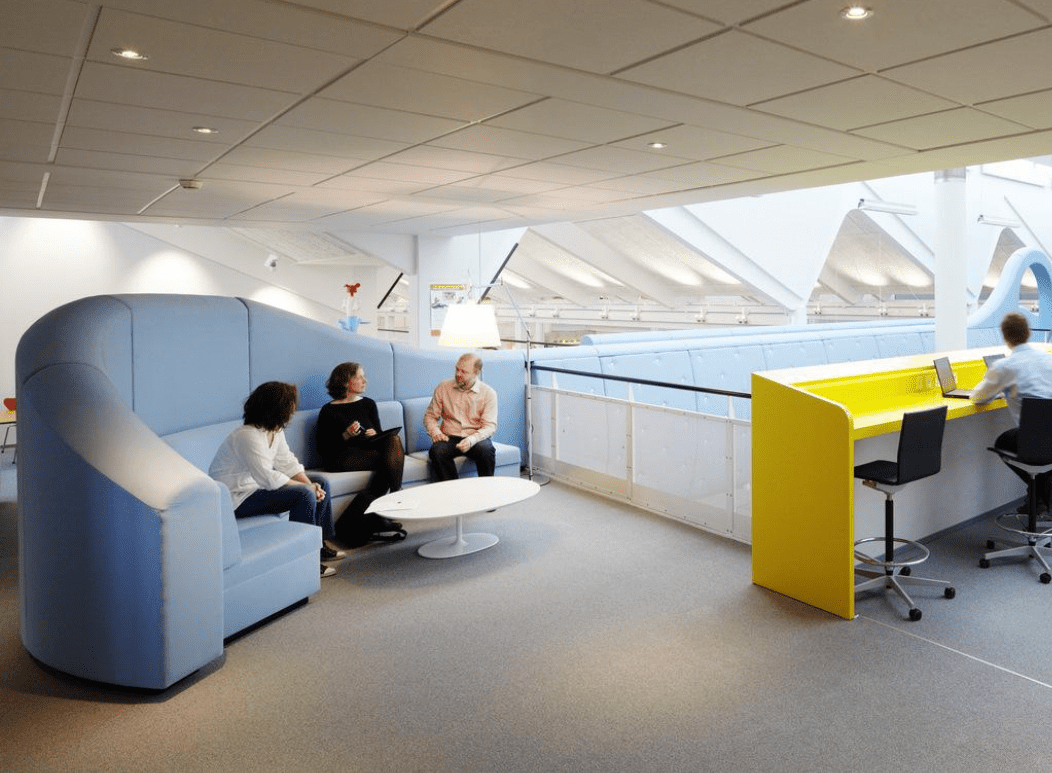 LEGO office in Billund, Denmark
LEGO office in Billund, Denmark3. Functionality
Before procuring furniture for specific areas of the office, one must determine the intended purpose of each space.
Open space
Commercial spaces are usually designed without many partitions, allowing the owner to customize the layout as they see fit. Increasingly, office owners or lessees are choosing to keep their spaces open-plan, foregoing the conventional cabin layout. The open space style allows for accommodating a larger number of people comfortably and enhances team communication. Employees can effortlessly interact and address business queries on the spot without the need to move from room to room or convene formal meetings.
This office arrangement also results in cost savings on renovation. Movable lightweight partitions can be swiftly reconfigured if needed and can even be relocated if the company decides to move to a different location. Moreover, a single common area often requires fewer office appliances.
However, some employees might find it easier to concentrate in an enclosed environment. The ambient noise in a large hall could disrupt client interactions. Therefore, when designing an open space, ensure there are separate meeting rooms and soft seating areas for informal discussions.
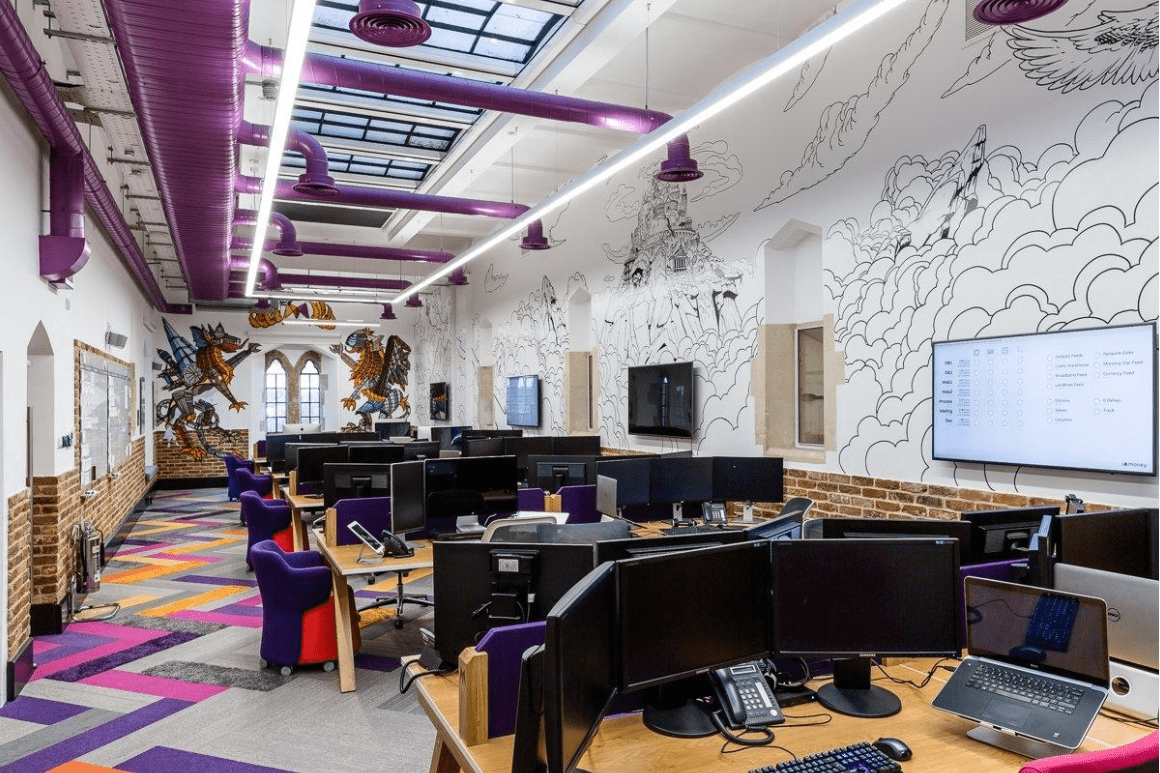 Money.co.uk office in Cirencester, UK
Money.co.uk office in Cirencester, UKAccounting Department
Accountants necessitate a secluded space where they can work in tranquillity, handling the company's confidential financial data. The furniture in this department might also differ from the rest of the office. Despite the move towards digitization, accountants often deal with a significant volume of paper documents that require spacious, secure cabinets for storage.
In certain accounting departments, there might still be a need for a robust safe of considerable size. Furthermore, remember to allocate a separate printer for documents containing confidential business information.
In sum, designing an office isn't just about aesthetics; it's also about functionality and catering to the specific needs of different departments. Proper planning can optimize productivity, employee well-being, and cost efficiency.
Manager's office
This space typically exudes a more refined aura than other office rooms. It's crucial to leave the right impression on visitors, such as potential partners, investors, and VIP clients. Guests should perceive that the company is thriving and evolving. Usually, the executive office contains:
- A large desk
- A comfortable chair
- A cabinet with closed shelves for documents and open ones for souvenirs from partners
- A briefing table or a long oval table for meetings with staff
Depending on the room's size, it may also be fitting to include soft furnishings and a mini-bar for celebrating successful deals.
Meeting rooms
Meeting rooms represent the face of the company, visible to clients, partners, and prospective employees. The furniture in these rooms should be both prestigious and minimalistic: a large table, chairs, and equipment for presentations. Walls adorned with the company's accolades can help create a lasting impression.
Even if there's a pantry in the office, it's a good idea to have an additional water cooler and coffee machine near the meeting rooms, allowing the manager to offer guests a drink.
Relaxation Rooms
Increasingly, company leaders are establishing relaxation rooms for employees, complete with a kitchenette. Here, staff can warm up meals, grab a snack, chat with colleagues, or even take a short nap. As practice shows, such relaxation spaces boost staff productivity.
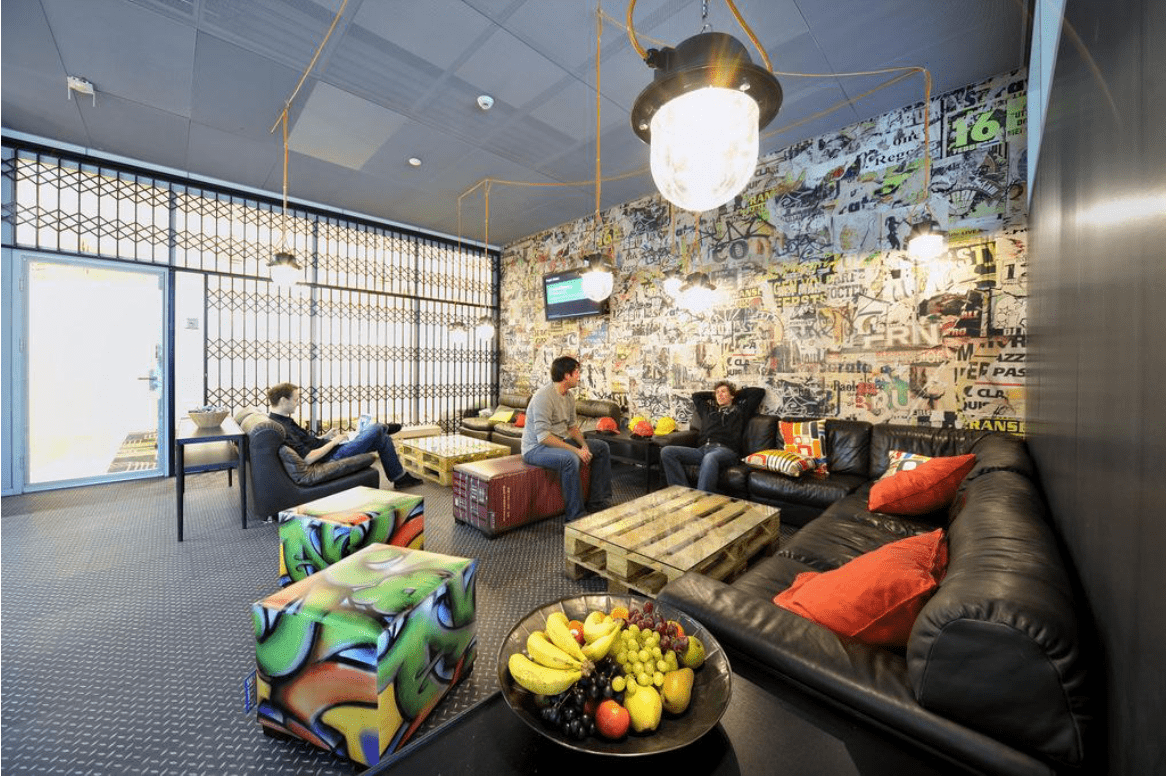 Google office in Zurich, Switzerland
Google office in Zurich, SwitzerlandEven if you don't have a full-fledged relaxation room in your office, it's worth acquiring some comfy chairs and a coffee table for a lounge area. At the very least, this discourages employees from having their coffee at their workstations, reducing the risk of spills on documents or keyboards.
It's equally important to provide lockers or cabinets for outerwear, changeable footwear, and personal items. This way, regular office inhabitants won't feel like they're just visitors in the space.
It's worth mentioning some important nuances that might slip your attention.
- Lighting. It should be adequate in the workspace of every employee, and most importantly, pleasant to the eyes. The choice of light fixtures can sometimes be more significant than choosing tables, chairs, and cabinets.
- Furniture Arrangement. Make sure to place furniture items so that employees can comfortably access items from shelves and racks without getting up from their workstations, ensuring that the distance to the printer is as short as possible for everyone.
- Wiring. If you're commissioning a design project, the designer is obligated to consider convenient wire routing in advance. When moving into a renovated office, it's preferable to choose desks with built-in sockets or at least openings for wires.
- Upholstery of Soft Furniture. The surface of upholstered furniture should be stain-resistant, hygienic, and easy to clean.
If you wish to provide your employees with a comfortable and modern office without exceeding your budget, consider reaching out to Jara Property. Our designers will create a comprehensive concept for your space according to your desires, considering every interior detail. We collaborate with reliable furniture suppliers who maintain a balance between cost and quality.
Book a consultation for any convenient day and hour, we will answer all your questions, absolutely free
